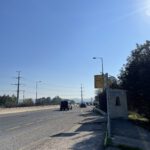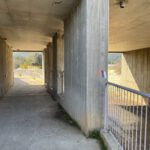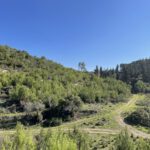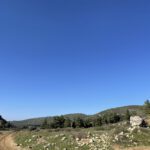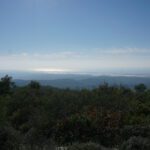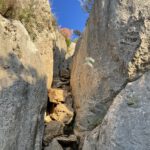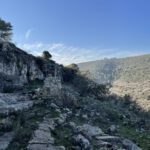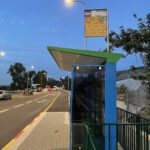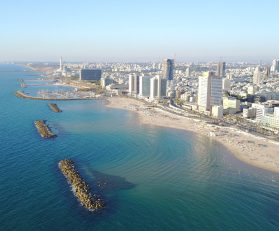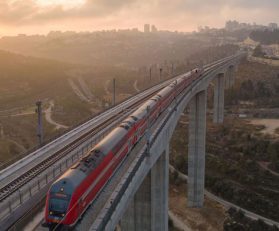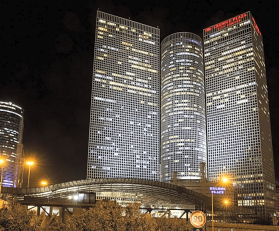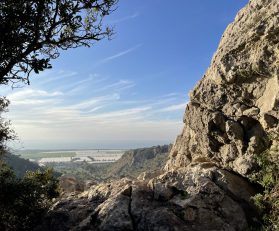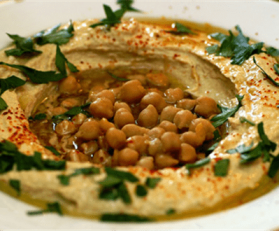Hardly any traveler will doubt that Israel is a country full of natural beauty and a true hiker’s paradise. What often makes the enjoyment of this beauty difficult, however, is the arduous journey, because Israel’s national parks are often rarely accessible by public transport and so the individual traveler is left only with organized tours or the costly alternative of a rental car. Despite these problems, there are some hikes that can be reached by bus and train. For example, hiking Mount Carmel near Haifa is a great day trip. Here we show you how it works!

When people think of Israel’s landscape, they often imagine the barren stone desert of the Negev or the steep cliffs at the Dead Sea. The country’s largest national park, however, is a sharp contrast: gentle mountain peaks, lush forests and Mediterranean scrub dominate the landscape in Mount Carmel National Park. In the hinterland of Haifa rises this mountain range, which is probably the greenest spot in the holy land. For hiking tourists, there is much to discover in the mountains: peaks, caves, gorges and breathtaking views all the way to the Mediterranean Sea await you! What distinguishes the national park from others in Israel is the easy accessibility by public transport. From Tel Aviv, Kibbutz Jagur on the north side of the park can be reached in less than two hours. This is also where our hike starts.
Start: Kibbuz Jagur
End: En Hod
Length: 22 km
Difficulty: Medium
Arrive: Train from Tel Aviv to Haifa -> Bus 320 to Kibbutz Jagur
Abreise: Bus 691 from Ein Hod to Hof Carmel (Haifa) -> Train to Tel Aviv
At the bus stop of Kibbutz Jagur you can hardly guess that here begins a hike through a national park full of untouched nature. It is located right next to the highway and you can read the surprise off the bus driver’s face when you get off here as a tourist. However, only a few meters after the bus stop, the hiker already sees the three characteristic strips of the Israel National Trail, a long-distance hiking trail through the entire country. Our hike also follows a section of this trail, which is why we can easily orientate ourselves by the markings. We pass the kibbutz and the adjacent amusement park and arrive at the gate to the national park. Here you will find some interesting information as well as rules that visitors should follow. (Take enough water with you, No fire in the park).
Be sure to bring provisions and water already! The mini-supermarket on the kibbutz sells its goods only to customers with a resident card.
The beginning of the actual hike is a steep climb that leads us to the first ridge. Although the slope is forested, you will have to use your hands from time to time when climbing over rocky ground. However, the effort is already rewarded here by interesting views. The industrial plants in the suburbs of Haifa in the distance seem almost unreal when viewed from the quiet forests of the national park and on a clear day one can see as far as Akko. After about four kilometers and 400 meters of altitude, we reach a rest area where we can recover from the climb. Here we can take a short break before continuing on the now only gently ascending path.

Next, a somewhat different sight awaits us. At the David Eisen viewpoint, a terrain model several meters wide shows the landscape around the Suez Canal and information boards provide insight (in Hebrew) about Israel’s conquest of the canal during the war of attrition. There is a special focus on the memory of David Eisen and seven other soldiers who died fighting for the canal. Next to the model is also a drinking water dispenser where we can refill our bottles.
The next stop on our hike is the village of Isfaya. Here live mainly Druze, which is noticeable by a house of worship located along the way. We cross a residential area for about 500 meters before we enter the forests of the national park again. The further path now leads into a slightly sloping valley. After a short while, the trail runs through a dried up riverbed that narrows into a gorge over time. This is definitely one of the highlights of the tour! Secured by metal steps and railings, the descent is an entertaining change from the previous trails. At the same time, however, caution is advised here. The riverbed can quickly turn into a raging torrent when it rains, so it should definitely not be walked in bad weather!
At the end of the gorge, a wide basin opens in front of us. Some small huts testify to a gentle agricultural use, but nevertheless one feels far away from civilization and surrounded by the lush green of the national park. From here starts the second major climb of our tour: the ascent of Har Shokef, one of the most prominent peaks in the national park. After a few hundred meters on a dirt road, we will ascend on a narrow serpentine path. Once we reach the top, we are being rewarded with a view again. From the summit we can overlook almost the entire park to the Mediterranean Sea and natural stone benches invite us to linger. Since we have now also completed a little more than half of the hike, a somewhat longer lunch break at this place is a viable option.

From the summit we descend towards the south. In the southern part of the national park we are presented with a completely different landscape. The forests give way to Mediterranean bushes that exude a spicy fragrance, and the gentle hills are broken up by steeply rising walls of rock. Again and again, hands have to be used in order to master small, easy climbing passages. In the bizarre rock formations we discover caves, some of which are also important archaeological sites. The mountains were already populated in prehistoric times and so artifacts and bones of the former inhabitants can still be found here today.
At the end of the hike, the trail climbs once more, to a smaller peak on the edge of the national park, overlooking the coastal plain and the Mediterranean Sea. If you have planned your hike skillfully, you can experience one of the most beautiful sunsets in Israel here. From the summit plateau, watching the sun sink into the sea is a truly unique experience.
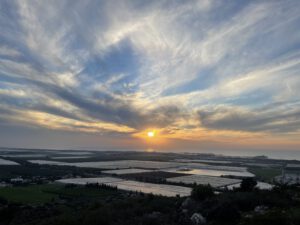
Before night falls, we finally descend to En Hod. The village is a sight in itself and is also a good place to spend the night. Almost all the inhabitants of the village are artists, among them some of the most influential in contemporary Israeli art. This is also reflected in the atmosphere of the village, where in many places there are small testimonies of the creative inhabitants to discover. From the center of the village, it is now possible to reach Haifa’s Hof HaCarmel train station by bus, from where trains to Tel Aviv depart regularly. We recommend, however, to end the day in a café or restaurant in En Hod and then, after dark, start the return journey.

